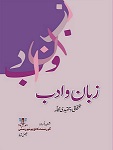A Rare Derivative dictionary of Urdu: AMAN UL LUGHAT
Keywords:
Urdu Lexicography, Nisaab Nama, khaliq Bari, Derivative Dictionary, Arabic Roots, Moulvi Aman Ul Haq.Abstract
The art of lexicography reflects the history of any language resources, its shades of meanings and its usages. The art preserves not only the history of words, but also preserves the time to time changes in words. Urdu lexicography starts with the efforts of the orientalists. Following the Arabic and Persian tradition, some of the Indian educated people started writing poetical dictionaries that were called Nisaab Naama. Like Khaliq Bari, dozens of Nisaab Naamas were compiled in many parts of the Sub- continent. Gharaib ul Lughaat by Abdul Waasay Hansvi is the first formal Urdu dictionary. In its making process, Urdu absorbed the vocabulary of many languages. Thousands of Arabic and Persian words now are part of Urdu. Moulvi Aman ul Haq compiled such a dictionary of Arabic words as are prevalent in Urdu. It’s a unique dictionary in the sense that it shows the shades of words with their real etymology. The article presents a detailed introduction to this rare dictionary.
References
Syed Abdullah, Dr. "Nawadir Ul Alfaaz" Karachi, Anjuman e Taraqi e Urdu, 2nd, 1992, P 1, 2.
Gharaib Ul Lughat was upgraded by Siraj Ud Din Ali khan Arzoo in the shape of Nawadir Ul Alfaaz.
Kamal e Atrat was the dictionary of 18th century.
Nafaes Ul Lughat was compiled by Ohd Ud Din Bilgrami in 1189 A.H.
Aman Ul Haq, Moulvi, "Aman Ul Lughat", Lakhnaou, Munshi Naval Kishore, 1876, P 1, 2.
As Above
Published
How to Cite
Issue
Section
Copyright (c) 2021 Zaban-o-Adab

This work is licensed under a Creative Commons Attribution 4.0 International License.


